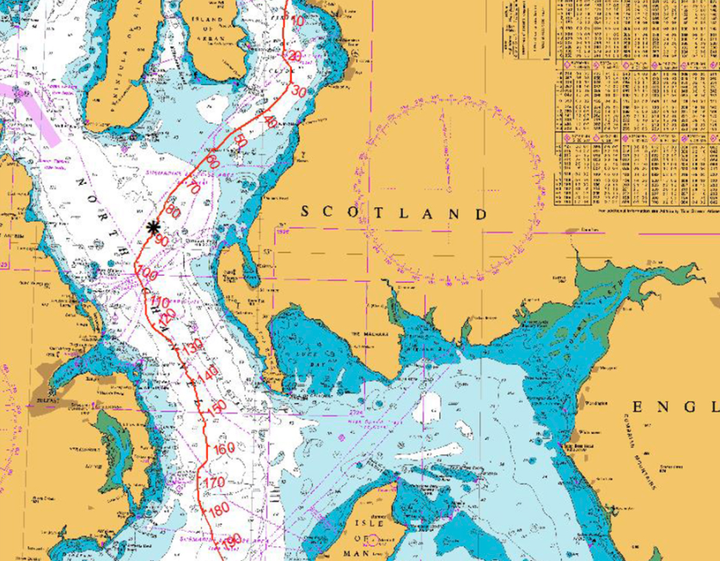The wreck of a German U-boat has been discovered off the coast of Scotland - and some are suggesting its sinking could be the work of the Loch Ness Monster’s cousin.
The 100-year-old vessel was found by marine engineers laying subsea power cables for the ScottishPower and National Grid Western Link off the coast of Stranraer, Wigtownshire.
Sonar images showed that the German submarine was still intact despite spending a century below the waves.

Official reports from the time tell how the U-boat, believed to be a UB-85, was caught on the surface on 30 April 1918 and sunk by a British patrol boat – the HMS Coreopsis - after its crew surrendered to British forces.
But a stranger account of the events of that day exists in sea folklore, according to Scottish Power.
According to legend, when asked why the sub was cruising on the surface, Captain Krech, the U-boat’s captain, explained that the vessel had been recharging its batteries at night when a “strange beast” with “large eyes, set in a horny sort of skull, emerged from the depths”.
He claimed the creature was so large that it caused the U-boat to list strongly to starboard. The men aboard fired at the creature until it disappeared back into the water but the sub’s forward deck plating had been damaged and it was no longer able to submerge.
Gary Campbell, keeper of the Official Sightings Register of the Loch Ness Monster, has his own ideas of how the vessel ended up at the bottom of the sea.

He explained: “It is entirely feasible that some large sea creature disabled the submarine. The WWI report from the Captain of the British ship HMS Hilary a year earlier makes it clear that sea farers at that time were well aware of large sea ‘monsters’ that could be harmful to their ships.
“History has shown that there have been consistent reports of large ‘monsters’ not just in lakes and lochs like Loch Ness but out in open waters as well. For many years the giant squid was known as the fearsome Kraken and given the size of the oceans, it wouldn’t be a surprise if many large species were still to be discovered.
“The area of sea where the attack took place has a history of sea monster sightings – they have ranged from the north coast of Wales to Liverpool bay. What the German Captain said could well be true.
“It’s great to see how Nessie’s saltwater cousin clearly got involved in helping with the war effort – she even managed to do the damage without anyone being killed.”
Innes McCartney, an historian and nautical archaeologist who has been working with the Western Link team to identify the vessel said that the submarine was likely to be either an UB-85 or her sister boat UB-82.
He explained: “In the waters of the Irish Sea there are at least 12 British and German submarines known to have sunk and potentially others whose actual sinking area remains a mystery. The features of this particular wreck, which is largely intact, confirm it as a UBIII-Class submarine, of which we know of two which were lost in the area – the more famous UB-85 and its sister boat UB-82.
“While I can conclude that this wreck is likely to be one or the other, they would be practically impossible to tell apart, aside from the numbers painted on them in service, now obviously long gone.
“Unless a diver can find a shipyard stamp, we cannot say definitively but yes, we’re certainly closer to solving the so-called mystery of UB-85 and the reason behind it’s sinking – whether common mechanical failure or something that is less easily explained.”
Peter Roper, of Western Link partner ScottishPower, said: “The images we get back from the subsea scans are incredibly detailed, but we obviously need to be aware of what lies beneath before we can start laying a power cable. In all the years I have been building power lines, I can say that this is the most extraordinary discovery.”

